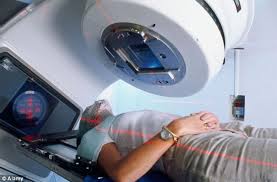Is Alcohol Causing Your Cancer?
Hope to Patients Fighting Alcohol & Deadly Tumors
Is Alcohol Causing your Cancer?

The effects of Alcohol and Cancer Risk are realistic and must not be taken lightly. Alcohol contribute immensely in causing cancer and treatment must be taken seriously
Globally alcohol is the most abused drug, it is also addictive and one of the biggest government source of revenue across the globe. Alcohol despite its effects in human health and the economies of the nations, it is legally acceptable and it finds its way in both the high and mighty and low places of our societies. So what exactly is this drug alcohol? It is the common term used ethanol or ethyl alcohol which is a chemical substance commonly found in beer, wine, liquor, some medicines, mouthwashes, household products and other essential oils scented liquids taken from plants. Now that we are up to date with what this product is, we want to shift focus to our theme of discussion in this article that primarily targeting the effects of alcohol and cancer risk. And for value addition, we spoke to experts at AWAREmed Health and Wellness Resource Center. This facility was founded by doctor Dalal Akoury and currently she is also the MD of the establishment. Together with her team of experts, they are going to help us put to perspective some of the concerns we have in relation to our topic of discussion today which is “the effects of alcohol and cancer risk”.
Nonetheless before we get into that alcohol is produced by the fermentation of sugars and starches by yeast, and it is very important that we are aware of the main types of alcoholic drinks and their alcohol content. This is going to be very helpful to us as we explore the primary effects of alcohol to cancer and cancer patients. The alcohol content in various alcoholic beverages is as follows:
- Beers and hard ciders: 3-7 percent alcohol
- Wines, including sake: 9-15 percent alcohol
- Wines fortified with liquors, such as port: 16-20 percent alcohol
- Liquor, or distilled spirits, such as gin, rum, vodka, and whiskey, which are produced by distilling the alcohol from fermented grains, fruits, or vegetables: usually 35-40 percent alcohol (70-80 proof), but can be higher
According to the National Institute on Alcohol Abuse and Alcoholism, a standard alcoholic drink in the United States for example contains 14.0 grams (0.6 ounces) of pure alcohol. Generally, this units of pure alcohol is found in
- 12 ounces of beer
- 8 ounces of malt liquor
- 5 ounces of wine
- 1.5 ounces or a “shot” of 80-proof liquor
Up to this point let me pose briefly and find out or justify why alcohol is the most abused drug globally. Take for instance according to the federal government’s Dietary Guidelines for Americans 2010 just five years ago, the federation position or definition of what should be considered to be moderate alcohol drinking is a maximum of one drink per day for women and two drinks per day for men. Heavy alcohol drinking is defined as having more than three drinks on any day or more than seven drinks per week for women and more than four drinks on any day or more than 14 drinks per week for men. With that piece of information, you are now beginning to appreciate the realities of alcohol abuse. Ideally what is considered heavy drinking per week is equivalent to what most people consume in just two hours daily. If in just two hours one would take this much, translate that in to a day then to a week, a month and a year. It thus explains why this is the most abused drug in our societies. Now let us get back to the effects of alcohol and cancer risk.
The effects of Alcohol and Cancer Risk: There is clear evidence that alcohol drinking is a cause of cancer
Based on extensive reviews of research studies, there is a strong scientific consensus of an association between alcohol drinking and several types of cancer. In its Report on Carcinogens, the National Toxicology Program of the US Department of Health and Human Services lists consumption of alcoholic beverages as a known human carcinogen. The research evidence indicates that the more alcohol a person drinks particularly the more alcohol a person drinks regularly over time, the higher his or her risk of developing an alcohol-associated cancer. It will shock you to know that the effects are very fatal when accounting for deaths resulting from the consumption of alcohol. From the available statistics, it was estimated that in 2009 about 3.5% of cancer deaths in the United State, were alcohol related. That percentage represents about 19500 people dying from this scourge.
Request more information on screening and treatment of Alcohol and cancer today: Call (843) 213-1480 or contact online.
Experts at AWAREmed Health and Wellness Resource Center under the able leadership of doctor Dalal Akoury while studying the formation of different types of cancer, they established that there is an emerging pattern between alcohol consumption and the development of the following types of cancer:
Head and neck cancer: Alcohol consumption is a major risk factor for certain head and neck cancers, particularly cancers of the oral cavity (excluding the lips), pharynx (throat), and larynx (voice box). People who consume 50 or more grams of alcohol per day (approximately 3.5 or more drinks per day) have at least two to three times’ greater risk of developing these cancers than nondrinkers. The matter is even more complicated where the patient is also smoking thereby increasing the risk even much higher.
Esophageal cancer: The consumption of alcohol poses a major risk factor for a particular type of esophageal cancer commonly known as esophageal squamous cell carcinoma. Besides that, individuals who inherit a deficiency in an enzyme that metabolizes alcohol also have significantly increased risks of alcohol-related esophageal squamous cell carcinoma.
Liver cancer: Alcohol consumption is an independent risk factor for, and a primary cause of, liver cancer (hepatocellular carcinoma). (Chronic infection with hepatitis B virus and hepatitis C virus are the other major causes of liver cancer.)
Breast cancer: Ideally no study about types of cancer can be done without torching on the breast cancer. Actually this in one of the most discussed types of cancer globally. In our case study following more than 100 epidemiological studies whose objective was to find any link between alcohol consumption and breast cancer, it was established in most of these studies that breast cancer is closely linked to alcohol intake. A meta-analysis of more than half of these studies revealed that women who drunk more than 45 grams of alcohol daily (3 drinks) had 1.5 times the risk of developing breast cancer compared to nondrinkers. The risk of breast cancer was however higher across all levels of alcohol intake: that is to say for every 10 grams of alcohol consumed daily (slightly less than one drink), researchers observed a small (7 percent) increase in the risk of breast cancer.
It therefore confirms that alcohol abuse is a serious threat to life as it introduces cancer into your life. You can have this prevented or corrected by seeking for immediate help from the experts at of AWAREmed Health and Wellness Resource Center by scheduling for an appointment today and doctor Akoury will professionally and personally handle your condition.
Request more information on screening and treatment of Alcohol and cancer today: Call (843) 213-1480 or contact online.
The effects of Alcohol and Cancer Risk: What is alcohol?





 Past medical records have indicated that patients generally enjoy interacting in a shared form of environment. There are less cases of tension associated with medical situations and this can always provide a lot of encouragement to those who attend the sessions while providing them with essential tips that may not be received in a short medical visit.
Past medical records have indicated that patients generally enjoy interacting in a shared form of environment. There are less cases of tension associated with medical situations and this can always provide a lot of encouragement to those who attend the sessions while providing them with essential tips that may not be received in a short medical visit.





